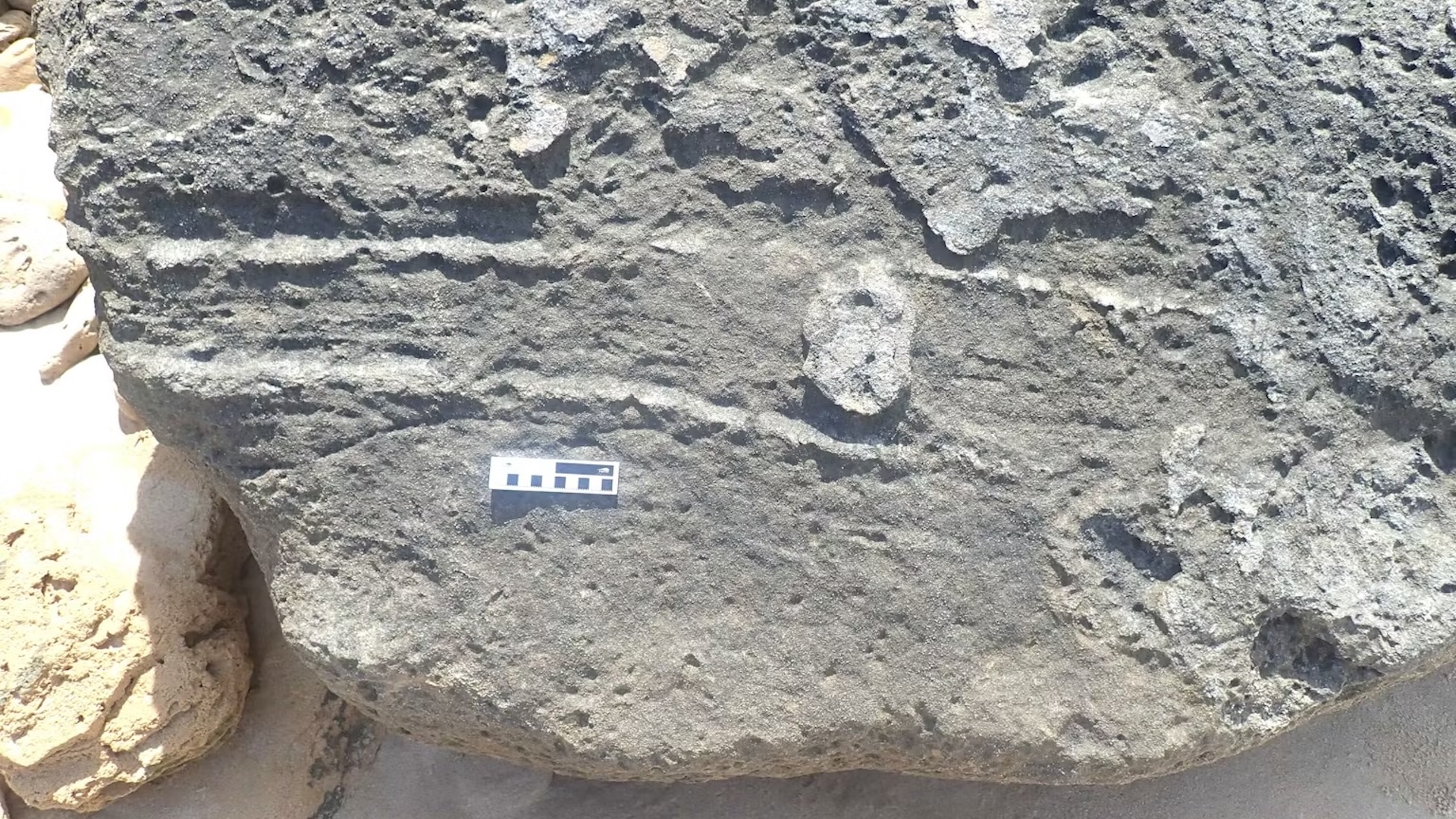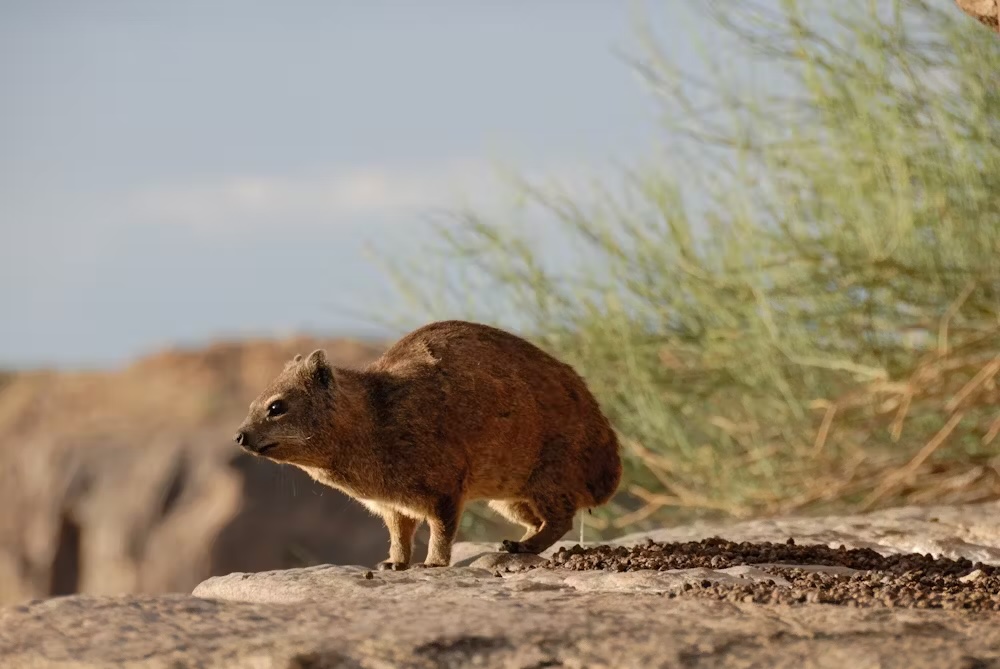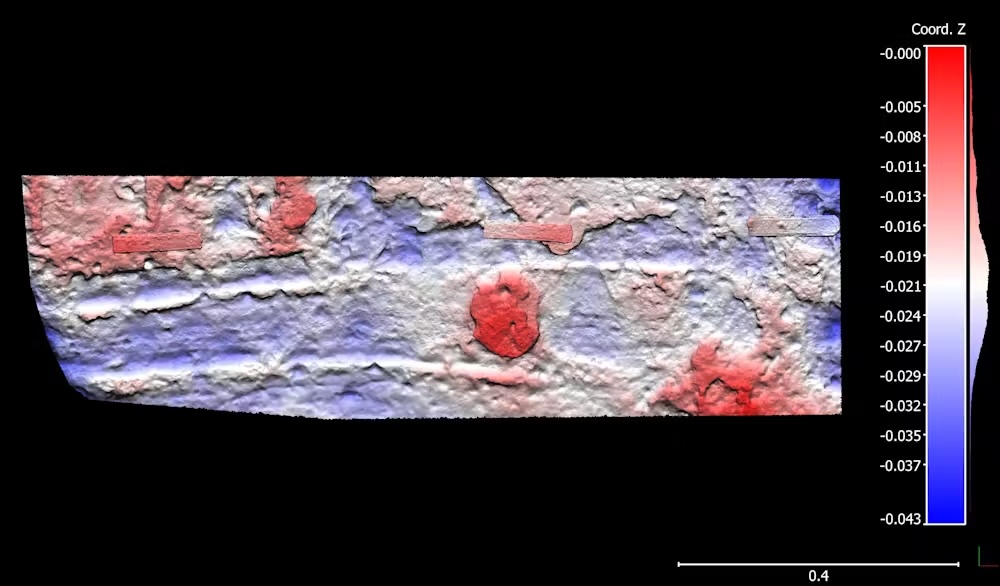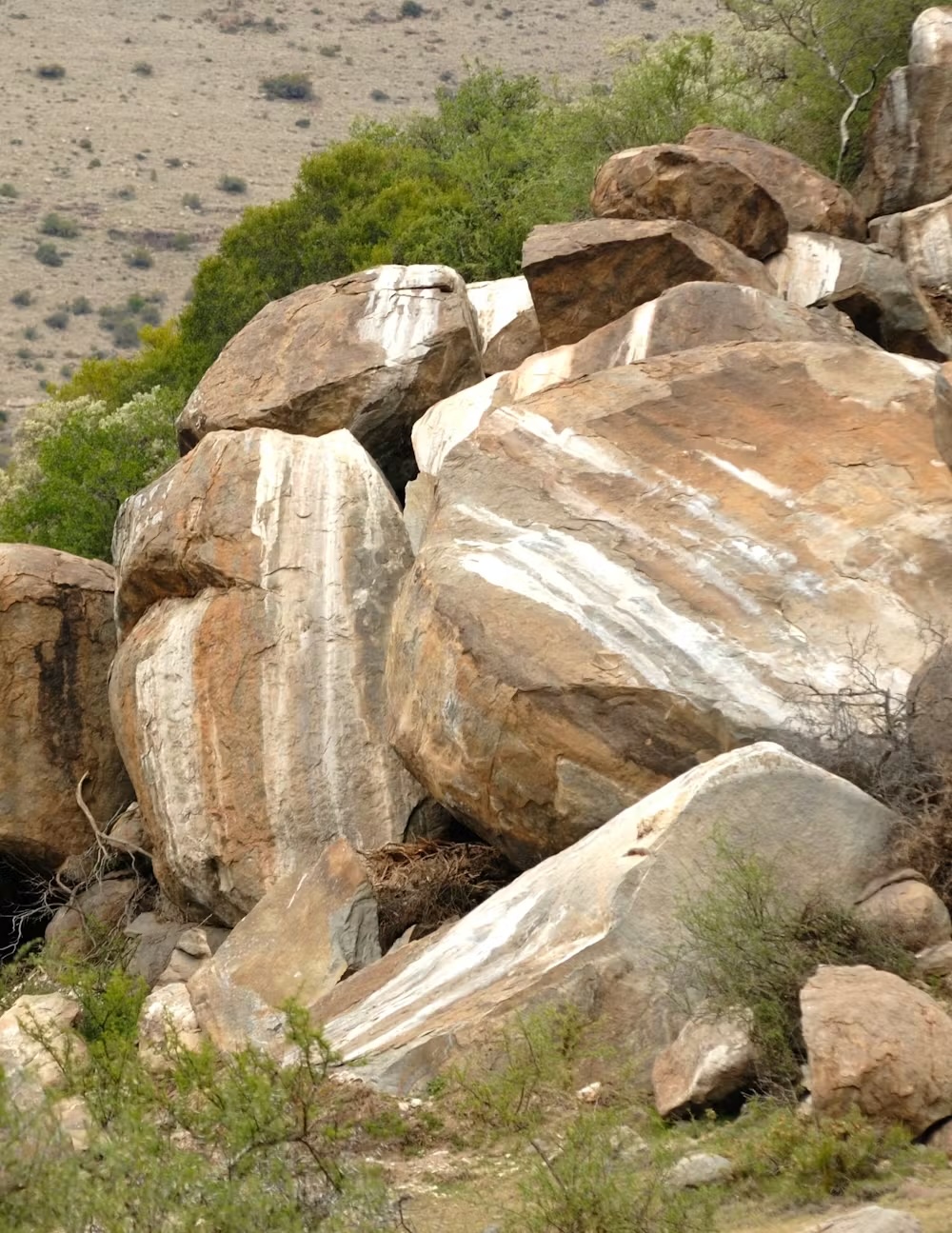First of its kind 'butt drag fossil' discovered in South Africa — and it was left by a fuzzy elephant relative 126,000 years ago
The first hyrax fossil tracks and traces ever to be discovered were identified on South Africa's coast.

Rock hyraxes, known in southern Africa more often as "dassies," are furry, thickset creatures with short legs and no discernible tails. They spend much of their time sunning themselves on rocky outcrops.
Another thing they sometimes do is drag their butts along the ground. Dog owners know that this behavior can be a sign of parasitic infections; in hyraxes the reason seems to be less clear, but this action leaves distinctive traces in sandy areas.
Traces and tracks — ancient, fossilized ones — are what we study at the African Centre for Coastal Palaeoscience through the Cape south coast ichnology project. Over the past few decades, we have found almost 400 vertebrate tracksites on this coast, some as old as 400,000 years, in cemented dunes known as aeolianites from the Pleistocene epoch. This epoch lasted from about 2.58 million years ago to about 11,700 years ago.
We're building up a picture of the environment during that period and how the animals and plants of that time lived.
Among our latest finds are two fossilized traces that appear to have been made by rock hyraxes long ago. One is a track site and the other is a butt-drag impression with what may be a fossilized dropping in it.
The probable track site was brought to our attention from a site near Walker Bay on the Cape south coast by an ardent tracker, Mike Fabricius. It is around 76,000 years old. We found the probable butt-drag impression east of Still Bay on the same coast, and it is most likely around 126,000 years old.
The butt-drag impression is the first fossil of its kind to be described from anywhere in the world. In addition, these are the only possible fossilized hyrax tracks ever to be identified. In the world of paleontology, anything this unusual is important and we feel privileged to be able to interpret them.
Get the world’s most fascinating discoveries delivered straight to your inbox.

Interpreting the drag mark
Dating on our sites has been done through a technique known as optically stimulated luminescence, which works by analyzing when materials like sand were last exposed to light.

The butt-drag impression is 95 cm [37.4 inches] long and 13 cm [5.1 inches] wide. It contains five parallel striations. Its outer margins are slightly raised, and within it there is a 2 cm-high [0.8 inch] raised feature, 10 cm by 9 cm [4 by 3.5 inches]. Clearly something was dragged across the surface when it consisted of loose sand.
We considered possible causes other than hyrax buttocks. These included a leopard or an ancestral human dragging prey, or perhaps an elephant dragging its trunk. Firstly, however, these would be expected to leave tracks, and secondly in such interpretations the raised feature could not be explained.
But if it was a hyrax, it would make sense, because the buttock trace would have come after the tracks and wiped them out. And the raised feature might be a coprolite: a fused fossilized mass of hyrax droppings.
Old dung and urine
Rock hyraxes leave much more than just tracks and butt-drag traces. Because they prefer rocky areas, their tracks are not often found, but they polish rock surfaces to a shiny finish. This is similar to what buffalo on the North American prairie do, creating "buffalo rubbing stones".

Hyraxes also leave deposits of urine and dung. Urea and electrolytes are concentrated in their urine, and they excrete large amounts of calcium carbonate. This becomes cemented and forms extensive whitish deposits on rock surfaces. Due to their communal habits, hyraxes often urinate in the same preferred localities over multiple generations.
Their urine and dung often mix to form a substance known as hyraceum — a rock-like mass that can accumulate into extensive, dark, tarry deposits. Hyraceum has been used as a traditional medication to treat a variety of ailments, including epilepsy, and for gynecological purposes.
Hyraceum may be tens of thousands of years old, and can be regarded as a threatened, non-renewable resource. The middens, being sensitive to environmental changes and containing fossil pollen and other evidence of ancient life, form valuable natural archives for interpreting past climates, vegetation and ecology.
Thinking of hyraceum as a trace fossil, something which apparently has not been done before, can help in the protection of this underappreciated resource.

Although fossilized urine is globally uncommon, there is a word to describe it: "urolite", to distinguish it from "coprolite" (fossilized poop). It seems that hyraxes contribute the lion's share of the world's urolite. At paleontology conferences, students can be seen sporting T-shirts that brazenly state: "coprolite happens". In southern Africa, a more appropriate term might be "urolite happens".
Through appreciating the importance of butt-drag impressions, urolites, coprolites and hyraceum, and learning about the environment of rock hyraxes and other animals during the Pleistocene, we will never view these endearing creatures in the same light again.
This edited article is republished from The Conversation under a Creative Commons license. Read the original article.

Charles Helm is a family physician in Tumbler Ridge, British Columbia, and a Fellow of the College of Family Physicians of Canada. He helped found the Tumbler Ridge Museum and UNESCO Global Geopark after his son's discovery of Cretaceous dinosaur trackways, leading research on fossil trackways in both Canada and South Africa. A research associate at Nelson Mandela University's African Centre for Coastal Palaeoscience, he is pursuing a Ph.D. in geoscience and has pioneered work in geomythology.
You must confirm your public display name before commenting
Please logout and then login again, you will then be prompted to enter your display name.


